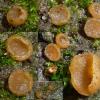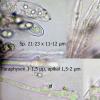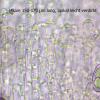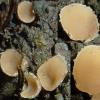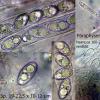
25-11-2016 13:54
 Stephen Martin Mifsud
Stephen Martin Mifsud
Hi, I found numerous seeds of Washingtonia robusta

28-10-2025 22:22
 Bernard Declercq
Bernard Declercq
Hello.I'm searching for the following paper:Punith

28-10-2025 19:33
 Nicolas Suberbielle
Nicolas Suberbielle
Bonjour à tous,Je voudrais votre avis sur cette r

28-10-2025 15:37
Carl FarmerI'd be grateful for any suggestions for this strik

28-10-2025 11:29
 Tanja Böhning
Tanja Böhning
Hello, I found this very small (ca 0,5mm) yellow

27-10-2025 00:34
 Francois Guay
Francois Guay
I found this strange species in Québec,Canada, gr

27-10-2025 15:29
 Michel Hairaud
Michel Hairaud
Bonjour à tous, Avec Elisabeth Stöckli nous avo
Leucoscypha semi-immersa
Björn Wergen,
16-11-2010 23:32
 Hello,
Hello,I have some problems with these two findings:
The first one is, hopefully my determination is correct, Leucoscypha semi-immersa (micro see photo). Fb size about 2-6 mm, orange-brown.
The second species is perhaps not L. semi-immersa, even if it looks like this in the microscopic features. But have a look on the macrophoto, it shows a completely different ascomata being bigger in size (4-12 mm) and having another color.
Are the showed species two different one or just an example of L. semi-immera variability?
Thanks a lot,
cheers, Kazuya
Michel Hairaud,
16-11-2010 23:41

Re:Leucoscypha semi-immersa
Hi Kazama,
Are the apos lying on burnt ground ?
I would suggest then Leucoscypha patavina which is also fairly common on sandy soil on the coas.
Amitiés
Michel
Are the apos lying on burnt ground ?
I would suggest then Leucoscypha patavina which is also fairly common on sandy soil on the coas.
Amitiés
Michel
Björn Wergen,
17-11-2010 00:19

Re:Leucoscypha semi-immersa
Hi Michel,
I have also thought about L. patavina, it was even my first thought after I had found this species. I am not sure now, I will proof it tomorrow, but the key did not take me to L. patavina, but to L. semi-immersa, which was already found and determined. This one is NOT L. semi-immersa, I think.
I cannot tell you if it is burnt ground. If yes, it was not obvious, but I am sure the location had something special, perhaps also with some burnt ground.
cheers and thanks,
Kazuya
I have also thought about L. patavina, it was even my first thought after I had found this species. I am not sure now, I will proof it tomorrow, but the key did not take me to L. patavina, but to L. semi-immersa, which was already found and determined. This one is NOT L. semi-immersa, I think.
I cannot tell you if it is burnt ground. If yes, it was not obvious, but I am sure the location had something special, perhaps also with some burnt ground.
cheers and thanks,
Kazuya

